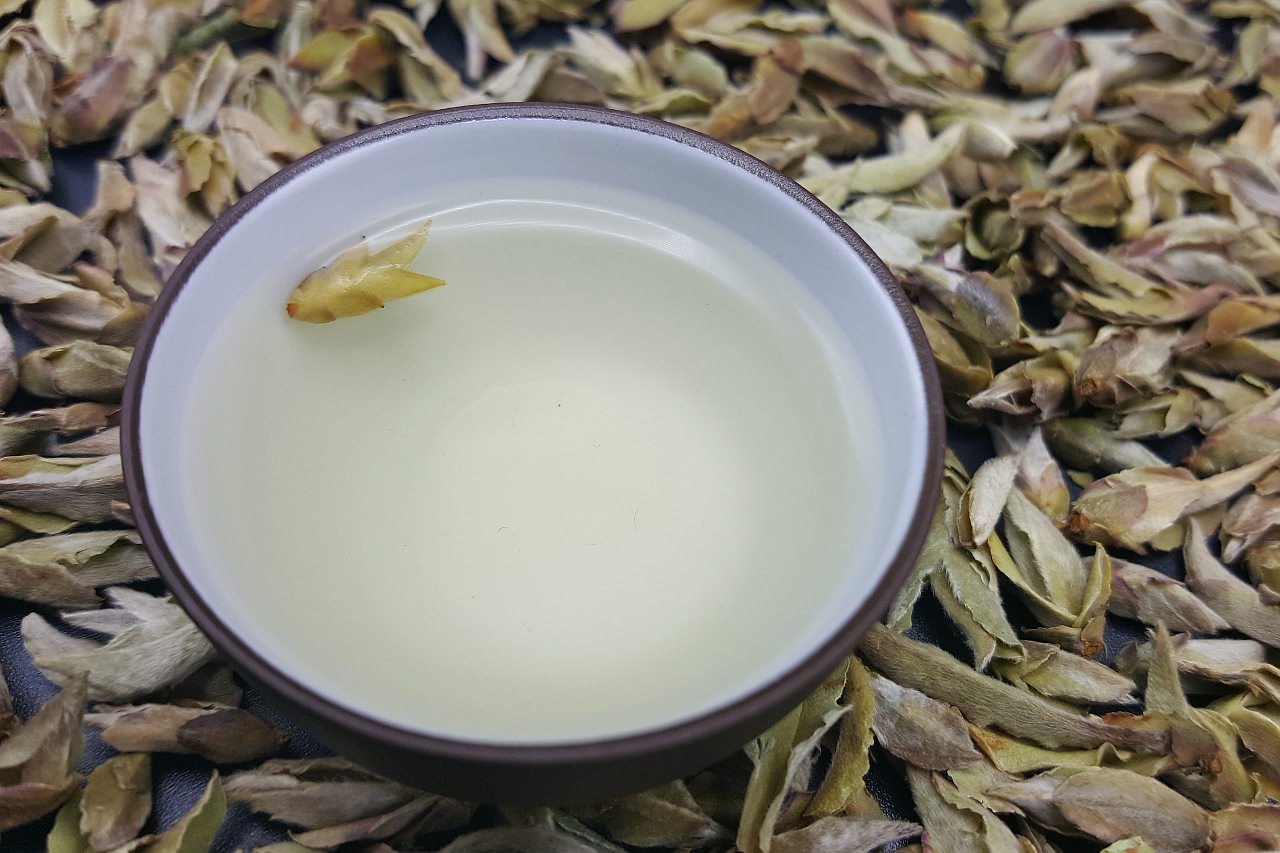Nan Mei White Tea Review: Where Smoke Meets Brimstone
Nestled in the Mengku sector of China’s Yunnan Province and straddling the border of Myanmar is the valley of Nanmei, a remote region a seven-hour drive from the heart of Pu’er City, an area featuring indigenous tea trees which some believe have been standing for over one thousand years. One tree in the area is claimed to be over 3,000 years old.
Incidentally, select researchers conjecture that Homo erectus may have stumbled on wild tea trees themselves given evidence of their living in Yunnan 1.7 million years ago.
Handpicked in high altitudes, often by the Lahu, an indigenous people native to China who inhabit the nearby village, Nai Mei tea is basically wild tea tree buds. Alleged ancestors of the camellia sinensis plant, the valley’s tree leaves are unpalatable as tea. But the buds make for an unique brew, buds that look and taste nothing like tea. Once picked, they’re dried using a centuries-old technique.

The tea itself tastes like the buds smell. I’ve sampled a lot of teas in my life, but nothing like this. Even though it’s classified as a white tea, the only two things Nan Mei buds have in common with the former is that they both need boiled water to cool for a few minutes before steeping. And they’re unprocessed. Green teas are either steamed or pan-fried, oolongs are bruised, oxidized, and roasted, and black teas are mangled the most and roasted the longest of all. But white teas? They’re typically air-dried. No fuss. Makes for a lighter, more delicate flavor. And a low caffeine content. However, in the case of Nan Mei, though it’s also withered and dried, there’s no caffeine at all, more of a herbal tea than anything else.
And the flavor is unforgettable.

More Tea of the Week:
(Left photo: Yunnan Province courtesy of Pixabay. Right photo: walk tea tree buds courtesy of Camellia Sinensis. Top header photo of Nan Mei tea buds © Evelyn Reid, may not be used with photographer’s explicit permission).
Don’t be fooled by the brew’s light, transparent color. Nan Mei is anything but weak. Intensely smokey with pine and citrus notes, the buds leave a comforting sulfuric peppery aftertaste that lingers long after a cup is finished. It tastes better than it sounds, by the way. In anything, it’s brilliant. Uncommonly comforting and refreshing, I surprised a non-tea drinker with a thermos full for a second opinion. His unsolicited response? “Wow! What is this?” He finished the whole thing.
Very easy to steep too. After water reaches a boil, let it cool for seven minutes. Then steep 4 to 7 minutes. No worries if you keep the buds in there too long. No bitterness overtakes the flavor like in greens and selects blacks. The brew just gets a little smokier.
Nan Mei tea is a tricky tea to find online. The one place I know of that sells and ships Na Mei tea internationally is Camellia Sinensis.
“Intensely smokey with pine and citrus notes, the buds leave a comforting sulfuric peppery aftertaste that lingers long after a cup is finished.”

Nestled in the Mengku sector of China’s Yunnan Province and straddling the border of Myanmar is the valley of Nanmei, a remote region a seven-hour drive from the heart of Pu’er City, an area featuring indigenous tea trees which some believe have been standing for over one thousand years. One tree in the area is claimed to be over 3,000 years old.
Incidentally, select researchers conjecture that Homo erectus may have stumbled on wild tea trees themselves given evidence of their living in Yunnan 1.7 million years ago.
Handpicked in high altitudes, often by the Lahu, an indigenous people native to China who inhabit the nearby village, Nai Mei tea is basically wild tea tree buds. Alleged ancestors of the camellia sinensis plant, the valley’s tree leaves are unpalatable as tea. But the buds make for an unique brew, buds that look and taste nothing like tea. Once picked, they’re dried using a centuries-old technique.

Above: China’s Yunnan Province. (Photo courtesy of Pixabay). (Top photo of Nan Mei tea © Evelyn Reid, may not be used with photographer’s explicit permission).
The tea itself tastes like the buds smell. I’ve sampled a lot of teas in my life, but nothing like this. Even though it’s classified as a white tea, the only two things Nan Mei buds have in common with the former is that they both need boiled water to cool for a few minutes before steeping. And they’re unprocessed. Green teas are either steamed or pan-fried, oolongs are bruised, oxidized, and roasted, and black teas are mangled the most and roasted the longest of all. But white teas? They’re typically air-dried. No fuss. Makes for a lighter, more delicate flavor. And a low caffeine content. However, in the case of Nan Mei, though it’s also withered and dried, there’s no caffeine at all, more of a herbal tea than anything else.
And the flavor is unforgettable.

Above: Nan Mei wild tea tree buds. (Photo courtesy of Camellia Sinensis)
More Tea of the Week:
Don’t be fooled by the brew’s light, transparent color. Nan Mei is anything but weak. Intensely smokey with pine and citrus notes, the buds leave a comforting sulfuric peppery aftertaste that lingers long after a cup is finished. It tastes better than it sounds, by the way. In anything, it’s brilliant. Uncommonly comforting and refreshing, I surprised a non-tea drinker with a thermos full for a second opinion. His unsolicited response? “Wow! What is this?” He finished the whole thing.
Very easy to steep too. After water reaches a boil, let it cool for seven minutes. Then steep 4 to 7 minutes. No worries if you keep the buds in there too long. No bitterness overtakes the flavor like in greens and selects blacks. The brew just gets a little smokier.
Nan Mei tea is a tricky tea to find online. The one place I know of that sells and ships Na Mei tea internationally is Camellia Sinensis.








